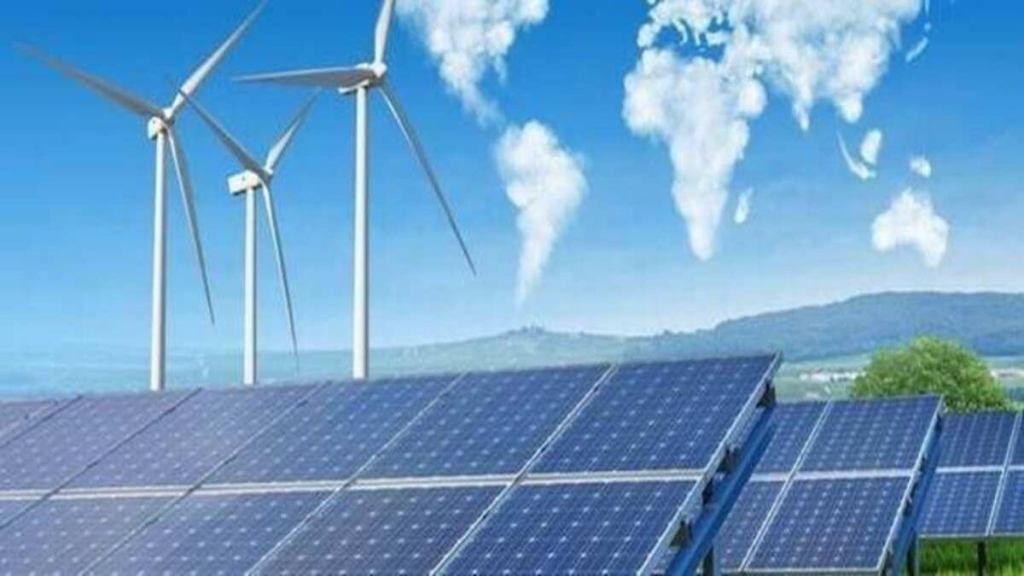After a slowdown in FY23 due to inflated costs of solar modules, capacity addition in the renewable energy (RE) sector has quickened in the current quarter, and industry players are sanguine about the medium-term prospects. Removal of non-tariff barriers on import of capital equipment for solar power has instilled confidence among developers, and the auctioning of new projects is expected to gather pace, industry sources and analysts say.
India added over 30 giga watt (GW) of RE capacity – solar, wind, hybrid, biomass – in the last two financial years, roughly a quarter of the current installed capacity of 125 GW. While the very low tariffs discovered under a clutch of solar auctions in the last few years and high cost of key inputs have caused some concerns about achieving the ambitious RE targets set under the National Electricity Plan, those doubts are now being dispelled.
Of course, there is a huge gap between the RE investment projections under the NEP – the latest 10-year plan 2022-2032 has recently been unveiled – and the International Energy Agency’s estimates of RE capacity pace for India to meet the net zero target by 2070. Official sources say the energy (fuel) mix envisaged under NEP which still relies significantly on the thermal power besides the rapid expansion of RE, would suffice for the country to met the carbon goals.
RE capacity addition saw a marginal decline in FY23 at 15.3 GW from 15.5 GW added in FY22, mainly due to slowdown in solar segment. Net capacity addition in solar was 12.8 GW last fiscal, down from 13.9 GW in FY22.
In April 2022, a basic customs duty (BCD) was imposed on import of modules to boost domestic manufacturing. This, along with the mandate given to developers to source from the approved list of Indian models and manufacturers (ALMM) impacted solar projects.
“Early this year, the government relaxed the ALMM mandate till March 2024. It will allow developers to import modules. Though the customs duty is still there, the fall in international prices of modules will help ramp up RE capacity,” said Vikram V, vice-president and sector head, corporate ratings, Icra.
Vikram said that essentially, whether the 500 GW target is within reach, is a function of the auctions to be conducted and how soon the issues of land and transmission will get resolved. However, he recalled how National Solar Mission’s initial target of 20 GW for 2020 was finally raised to 175 GW, which reflected the policy resolve to boost RE capacity addition.
In the NEP released last month, the share of RE installed capacity is projected at 596 GW by 2032. It also envisages total investments of `33.60 trillion (or $410 billion) for power capacity addition during 2022-2032. In contrast, the IEA estimates an investment need of $160 billion each year till 2030 for India to reach net zero emissions by 2070.
Sterling and Wilson Renewable Energy global CEO Amit Jain believes India will add 20 GW RE capacity this fiscal. “But from next year the pace will be more aggressive. Everybody has plans and modules are available.”
According to industry sources, JSW, Reliance, Adani and many other corporates have scaled up their RE plans. A lot of capacities are being planned for captive use also. Besides, the government has activated PSUs such as NTPC, ONGC, HPCL and NHPC.
International price of solar grade silicon, which had shot up to $39.2 per kg in August 2022, has come down to $12.4 in May 2023, as per HSBC Global Research. Price of wafers more than halved from 98 cents to 45 cents a piece during the period. Solar cells fell from near 17 cents per watt to 11 cents, and price of solar modules declined from more than 26 cents to 20 cents per watt.
“As per the renewable generation obligation (RGO), the government has mandated all upcoming coal and lignite-based power plants (COD between April 2023 and March 2025) to source a minimum of 40% of their capacity from RE. This mandate is expected to aid RE capacity addition,” said Pranav Master, senior director – consulting, Crisil Market Intelligence and Analytics.
While the government has come out with a bidding trajectory of 50 GW every year for the next five years, it needs to be ensured that this happens and also the execution, which largely faces three challenges namely land acquisition, transmission connectivity and, to a smaller extent, financing. Further, to grow the share of renewables in India’s power generation mix from around 12% to about 40%-50%, storage capabilities have to be developed.
“Overall, the policy support is immense for promoting RE deployment, and the pace at which the government is looking to solve any and every issue is unmatched,” said Serentica Renewables director Pratik Agarwal.
Jain echoed this view as he said, it’s going to be a “crazy run” for the the Indian RE industry for the next five years. A PLI for submarine cable manufacturing can help the country secure supply for the development of offshore wind and grid interconnections projects with neighboring countries like Maldives in the next 2-3 years, Agarwal added.
India’s current renewable capacity including large hydro was 172 GW as of March 2023. To achieve the 600 GW by 2032 would require additional about 430 GW over a 9-year period entailing a CAGR of about 15%.
However, CareEdge Ratings director Sudhir Kumar said while India has grown at such rates, but to continue growing at that rate would be very ambitious “given the huge financing requirement it entails (about $25 billion annually only for project development) coupled with issues around module manufacturing capacity, supply chain related challenges and other regulatory factors.”


